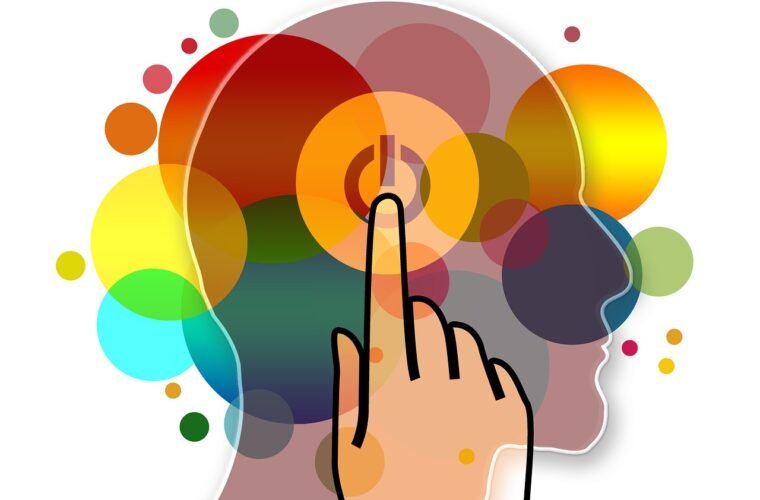Anyone seeking therapy via their GP is typically referred for cognitive behavioural therapy. The reason is simple: there is a lot more evidence supporting CBT as working effectively for many common conditions – depression, anxiety, phobias, anger, low self-esteem, and so on – and less evidence supporting other types of talking therapies.
However, it’s important to note that CBT is the most researched form of psychotherapy and was shown to be more effective at treating depression than medication. Consequently, the UK government decided to fund training and better access to CBT.
What is Cognitive Behavioural Therapy?
Cognitive Behavioural Therapy is a psychotherapeutic approach that focuses on identifying and challenging negative thought patterns and behaviours. It aims to help individuals develop healthier coping mechanisms and more positive ways of thinking. CBT is rooted in the understanding that our thoughts, emotions, and behaviours are interconnected and influence our overall well-being.
The focus of CBT is on the here and now, identifying and challenging negative thought patterns and behaviours that keep patients stuck in a never-ending loop of damaging self-talk. By challenging the negative thoughts (with the aid of tools such as thought records and psychoeducation), patients learn more positive ways of thinking and change the way they behave and feel. Indeed, the main focus of CBT is that thoughts, feelings and behaviours combine to influence a person’s quality of life.
Let’s illustrate this with an example. Sarah has depression and struggles to get out of bed in the morning. She has no motivation and feels hopeless and helpless. Nothing seems worthwhile and she gets no enjoyment from things she used to like doing. By showing Sarah how her behaviour is linked to her mood, her therapist encourages Sarah to ask a friend to accompany her on a daily short morning walk. Although this is difficult for Sarah, she follows the instruction and notices that her depression decreases. The daily activity has helped to lessen Sarah’s negative thoughts (by distraction and the release of exercise-induced hormones) and this in turn shifts the way Sarah feels. Notice that a change in behaviour impacts Sarah’s thoughts which has a knock-on effect on her feelings or mood.
Here’s another example: social phobia which manifests as severe shyness in social situations. This may come about from someone thinking that other people will always find them boring or stupid. Consequently, this could cause feelings of anxiety in social situations. You see how thoughts cause certain behaviours which impact mood. A CBT therapist would help the client to take a more realistic view about themselves (as well as ways to be engaging in social situations) and encourage them to test their new-found view of themselves by entering social events. Eventually, the experience of the events would consolidate their new self-image and start to eliminate the old negative thoughts. The client would then feel happier and more confident which is the change in feelings/mood.
The number of sessions offered by the NHS range from around 6 to 20, lasting up to 60 minutes per session. In private practice, the session count would be a collaborative decision between the client and therapist.
Not just a box of tools
Unlike traditional talk therapy, CBT is a structured and goal-oriented treatment. It is typically time-limited and focuses on specific issues or symptoms. The therapist and the individual work collaboratively to set achievable goals and develop strategies to overcome challenges.
Many view CBT as a manualised approach, full of tools and strategies to change thinking and lift moods but the relationship between the client and therapist is all important. As with all therapies, it is this relationship that achieves results, so in effect, it could be argued that it doesn’t matter which type of therapy you use. As an integrative therapist, I choose to adapt my choice of therapy to suit the client and typically use a mix of psychodynamic therapy and CBT.
While there is a lot of goal setting and structure in CBT, this doesn’t mean that sessions don’t take a retrospective approach; it’s always useful to consider a client’s history and how they formed their maladaptive thinking styles. However, the main focus is on their current life.
How Does Cognitive Behavioural Therapy Work?

CBT operates on the premise that our thoughts, feelings, and behaviours are interconnected. It recognizes that our thoughts can influence our emotions and behaviours, which, in turn, can impact our mental health. By identifying and challenging negative thoughts and behaviours, individuals can learn to replace them with more positive and adaptive alternatives.
The therapy process typically involves several key components:
1. Assessment:
The therapist works with the individual to gain a comprehensive understanding of their specific concerns, symptoms, and goals. This initial assessment helps to tailor the treatment plan to the individual's unique needs.
2. Identifying Negative Thought Patterns:
Through open dialogue and self-reflection, the therapist helps the individual identify negative thought patterns that contribute to their mental health issues. These thoughts may include irrational beliefs, distorted thinking, or automatic negative thoughts.
3. Challenging and Restructuring Thoughts:
Once negative thought patterns are identified, the therapist guides the individual in challenging and restructuring these thoughts. This process involves examining the evidence supporting or contradicting these thoughts and developing more balanced and realistic perspectives.
4. Behavioural Techniques:
CBT also incorporates behavioural techniques to address maladaptive behaviours that contribute to mental health issues. These techniques may include exposure therapy, behavioural experiments, and skills training.
5. Homework and Worksheets:
CBT often involves assigning homework and providing worksheets to reinforce the techniques learned in therapy. These exercises encourage individuals to practice new skills outside of therapy sessions, promoting long-term change.
Conditions It Helps
CBT has been extensively researched and proven effective in treating various mental health conditions. Some of the most common conditions that CBT can help with include:
- Anxiety disorders (e.g., generalized anxiety disorder, social anxiety disorder, panic disorder)
- Depression
- Post-traumatic stress disorder (PTSD)
- Obsessive-compulsive disorder (OCD)
- Eating disorders
- Substance abuse disorders
- Sleep problems
- Anger issues
- Phobias
- Low self-esteem
- Relationship problems
CBT provides individuals with practical tools and strategies to manage their symptoms and improve their overall well-being. It empowers individuals to take an active role in their treatment and equips them with lifelong skills to navigate future challenges.
Looking at the past
Critics of CBT might argue that it doesn’t look at underlying causes of mental health conditions, such as an unhappy childhood or families negatively impacting on the client’s wellbeing.
Although CBT places less emphasis on discussing one’s past compared to other types of therapy, practitioners do strive to understand individuals holistically, and thus, are interested in learning about a client’s past and present experiences. Discussing the past can help clarify the adaptive function that behaviors played during earlier time points in life, thereby helping clients to develop self-compassion for current difficulties. However, one advantage of CBT is that insight related to how a problem developed is not necessary for an individual to change.
Does CBT Work For All?
It’s also true that to a large extent, the client needs to be motivated for CBT to work well and be willing to complete homework in-between sessions. It may also not be appropriate for more complex mental health conditions.
As with any type of therapy, what works for one person, may not work for another and it’s important to bear this in mind. You can apply this to medications too. Certain anti-depressants may work well for some but not for others. The key message is to try what you think might benefit you most and if it doesn’t seem to work for you, switch to another type of therapy or another therapist. As pointed out earlier, the biggest predictor of positive outcomes in therapy is the relationship between therapist and client.










